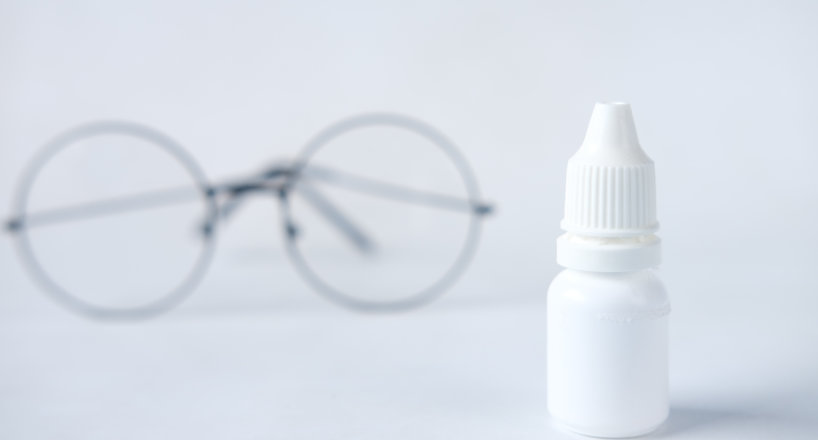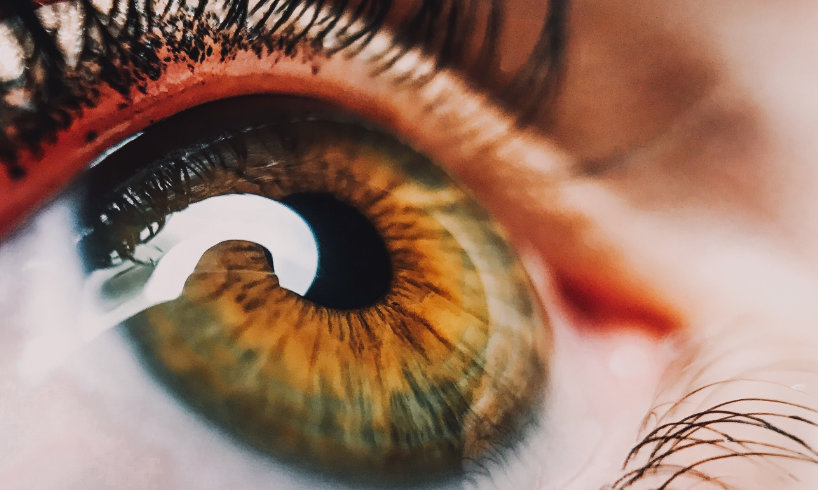Dry Eye Syndrome

Dry eye syndrome (DES or dry eye) is a persistent lack of adequate lubrication and moisture on the surface of the eye. Its effects range from small irritation to the failure to wear contact lenses and an increased danger of corneal swelling and eye infections.
Symptoms and signs of Dry Eye
Consistent dryness, scratchiness, and a burning experience in your eyes are common symptoms of dry eye syndrome. These signs alone might suffice for your optometrist to detect dry eye syndrome. Often, she or he may want to measure the number of tears in your eyes. A thin strip of filter paper put at the edge of the eye, called a Schirmer test, is one way of determining this.
Some people with dry eyes also experience a “foreign body feeling”– the sensation that something is in the eye. And it may appear odd, but sometimes dry eye syndrome can cause watery eyes since the extreme dryness works to overstimulate the production of the watery part of your eye’s tears.
What Causes Dry Eyes?
In dry eye syndrome, the tear glands that moisturize the eye don’t produce enough tears, or the tears have a chemical composition that causes them to evaporate too quickly.
Dry eye syndrome has a number of causes. It occurs:
- As a part of the natural aging process, specifically among ladies over age 40.
- As an adverse effect of numerous medications, such as antihistamines, antidepressants, certain high blood pressure medicines, Parkinson’s medications, and birth control pills.
- Because you live in a dry, dusty, or windy environment with low humidity.
If your office or home has air conditioning or a dry heating system, that too can dry your eyes. Another cause is inadequate blinking, such as when you’re looking at a computer system screen all day.
Dry eyes are also related to specific systemic diseases such as lupus, rheumatoid arthritis, rosacea or Sjogren’s Syndrome (a triad of dry eyes, dry mouth, and rheumatoid arthritis or lupus).
Long-term contact lens wear, incomplete closure of the eyelids, eyelid illness, and a shortage of tear-producing glands are other causes.
Dry eye syndrome is more typical in ladies, possibly due to hormone changes. Current research suggests that smoking, too, can increase your risk of dry eye syndrome. Dry eye has actually likewise been related to insufficient lid closure following blepharoplasty– a popular plastic surgery to eliminate droopy eyelids.
Treatment for Dry Eye

Dry eye syndrome is an ongoing condition that treatments might be not able to cure. However, the symptoms of a dry eye– including dryness, scratchiness, and burning– can normally be effectively managed.
Your eyecare practitioner may recommend artificial tears, which are lubing eye drops that might alleviate the dry, scratchy sensation and foreign body experience of dry eye. Prescription eye drops for dry eye go one action even more: they help increase your tear production.
In some cases, your doctor might also prescribe a steroid for more instant short-term relief.
Another choice for dry eye treatment includes a tiny insert filled with a lubricating component. The insert is put simply inside the lower eyelid, where it continuously releases lubrication throughout the day.
If you use contact lenses, understand that lots of artificial tears can not be utilized throughout contact lens wear. You might need to eliminate your lenses prior to using the drops. Wait 15 minutes or longer (inspect the label) prior to reinserting them. For moderate dry eye, contact lens rewetting drops may suffice to make your eyes feel much better, but the impact is usually just short-lived. Changing to another lens brand could also help.
Inspect the label, but better yet, contact your physician before buying any non-prescription eye drops. Your optometrist will understand which formulas are effective and long-lasting and which are not, along with which eye drops will deal with your contact lenses.
To lower the impacts of sun, wind, and dust on dry eyes, use sunglasses when outdoors. Wraparound styles offer the very best protection.
Inside your home, an air cleaner can filter out dust and other particles from the air, while a humidifier adds wetness to air that’s too dry since of air conditioning or heating.
For more significant cases of dry eye, your eye doctor may suggest punctual plugs. These small devices are inserted in ducts in your lids to slow the drain of tears far from your eyes, thus keeping your eyes moister.
If your dry eye is caused by meibomian gland dysfunction (MGD), your medical professional may recommend warm compresses and suggest an in-office procedure to clear the obstructed glands and restore regular function.
Doctors often likewise advise special dietary supplements including certain vital fats to reduce dry eye symptoms. Drinking more water may also offer some relief.
If medications are the cause of dry eyes, ceasing the drug generally fixes the issue. However in this case, the benefits of the drug must be weighed against the adverse effects of dry eyes. Often switching to a different kind of medication alleviates the dry eye symptoms while keeping the required treatment. In any case, never switch or terminate your medications without seeking advice from your physician first.
Dealing with any underlying eyelid disease, such as blepharitis, helps too. This might require antibiotic or steroid drops, plus frequent eyelid scrubs with an antibacterial shampoo.
If you are thinking about LASIK, understand that dry eyes may disqualify you for surgical treatment, at least until your dry eye condition is successfully dealt with. Dry eyes increase your threat of bad healing after LASIK, so most surgeons will want to treat the dry eyes initially, to make sure a good LASIK outcome.
This opts for other kinds of vision correction surgery, as well.